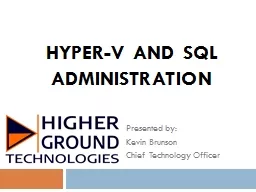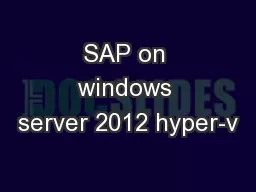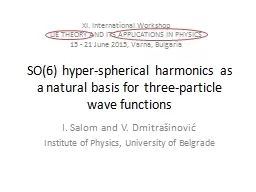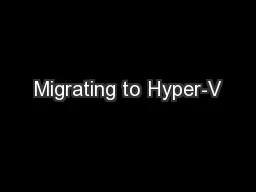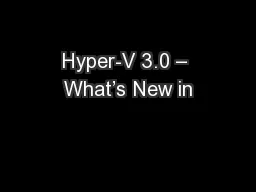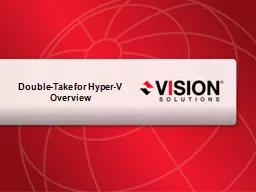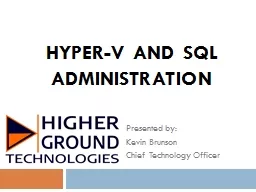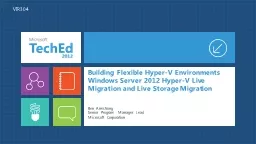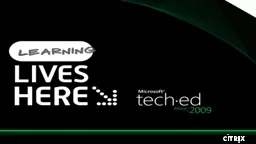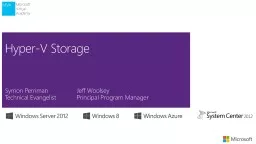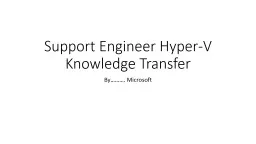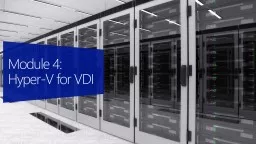PPT-Hyper-V and SQL Administration
Author : faustina-dinatale | Published Date : 2019-11-23
HyperV and SQL Administration Presented by Kevin Brunson Chief Technology Officer What We Will Discuss Microsoft HyperV What is it Common Tasks Demo HowTo Enable
Presentation Embed Code
Download Presentation
Download Presentation The PPT/PDF document "Hyper-V and SQL Administration" is the property of its rightful owner. Permission is granted to download and print the materials on this website for personal, non-commercial use only, and to display it on your personal computer provided you do not modify the materials and that you retain all copyright notices contained in the materials. By downloading content from our website, you accept the terms of this agreement.
Hyper-V and SQL Administration: Transcript
Download Rules Of Document
"Hyper-V and SQL Administration"The content belongs to its owner. You may download and print it for personal use, without modification, and keep all copyright notices. By downloading, you agree to these terms.
Related Documents

